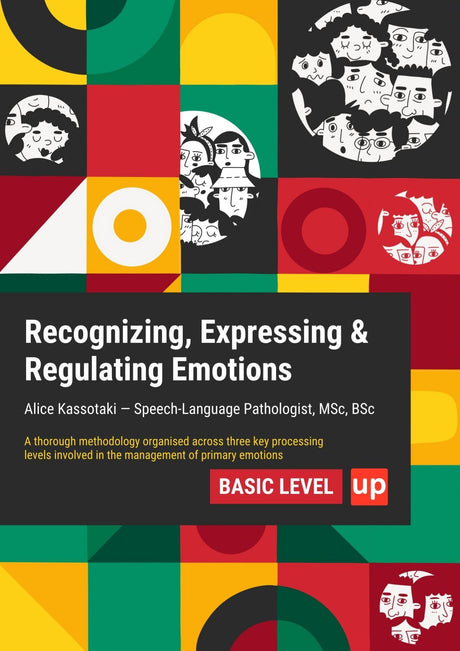Introduction: Understanding Oppositional Defiant Disorder
Navigating childhood behavior can be challenging, but distinguishing between typical defiance and a persistent pattern of problematic conduct is crucial. Oppositional Defiant Disorder (ODD) is a clinical diagnosis that goes beyond normal boundary-testing. It represents a recurring pattern of angry or irritable mood, argumentative behavior, and vindictiveness that causes significant impairment in a child's life. Understanding the specific diagnostic criteria outlined in the Diagnostic and Statistical Manual of Mental Disorders, Fifth Edition (DSM-5), is the first step for parents, educators, and clinicians to identify, understand, and effectively address this condition.
Key Points
- DSM-5 reframes ODD with three symptom clusters—Angry/Irritable Mood, Argumentative/Defiant Behavior, and Vindictiveness—and allows concurrent diagnosis with Conduct Disorder for better clinical precision.
- A diagnosis requires ≥4 symptoms for ≥6 months, functional impairment, and symptoms directed toward at least one non-sibling, with severity specified by the number of settings affected.
- Accurate differential diagnosis (from typical defiance, CD, DMDD, ADHD, anxiety/mood or learning disorders) and a comprehensive, multi-informant assessment guide evidence-based care (e.g., parent management training, CBT, and treatment of comorbidities).
The Evolution of ODD Criteria: Why DSM-5 Matters

The DSM-5, published in 2013, introduced significant refinements to the diagnostic criteria for ODD. These changes were not arbitrary; they reflect a deeper clinical understanding of the disorder, aiming to improve diagnostic accuracy and differentiate ODD from other related conditions.
A Brief Look at ODD in Previous DSM Editions
Prior versions of the DSM, such as the DSM-IV, listed ODD symptoms in a single, undifferentiated list. While this was useful, it didn't fully capture the distinct emotional and behavioral components of the disorder. Furthermore, the DSM-IV had a strict exclusionary rule: a diagnosis of ODD could not be given if the criteria for Conduct Disorder were also met. This created challenges, as many children exhibit behaviors of both disorders.
Key Refinements and Updates to ODD Criteria in DSM-5
The DSM-5 made two pivotal changes. First, it grouped the symptoms into three distinct clusters: Angry/Irritable Mood, Argumentative/Defiant Behavior, and Vindictiveness. This acknowledges that ODD is not just about defiant actions but also involves significant emotional dysregulation. Second, it removed the exclusionary rule regarding Conduct Disorder, allowing for a concurrent diagnosis. This reflects the clinical reality that the two often co-occur and that the presence of ODD symptoms alongside conduct issues is an important factor in treatment planning.
What These Changes Mean for Diagnosis and Understanding
These refinements provide clinicians with a more nuanced framework. By specifying symptom clusters, the DSM-5 helps identify the primary drivers of a child's behavior—is it predominantly emotional irritability or behavioral defiance? This distinction is vital for tailoring interventions. Allowing for a dual diagnosis with Conduct Disorder also provides a more complete picture of a child’s challenges and helps predict long-term outcomes more accurately.
Deconstructing the DSM-5 Diagnostic Criteria for ODD
To receive a diagnosis of ODD, an individual must meet several specific criteria related to the pattern, frequency, and impact of their behaviors. These criteria ensure that the diagnosis is applied only when the behaviors are persistent and cause genuine impairment.
The Core Requirement: A Pattern of Angry/Irritable Mood, Argumentative/Defiant Behavior, or Vindictiveness
The overarching requirement is a persistent pattern of behavior characterized by at least one of the three core symptom clusters. This pattern must be directed toward at least one individual who is not a sibling and must be present for a minimum duration.
Criterion A: Core Symptom Clusters (At least four symptoms from any of the following categories, lasting at least 6 months)
An individual must exhibit at least four symptoms from the following three categories:
- Angry/Irritable Mood
-
- Often loses temper.
- Is often touchy or easily annoyed.
- Is often angry and resentful.
- Argumentative/Defiant Behavior
-
- Often argues with authority figures or, for children and adolescents, with adults.
- Often actively defies or refuses to comply with requests from authority figures or with rules.
- Often deliberately annoys others.
- Often blames others for his or her mistakes or misbehavior.
- Vindictiveness
-
- Has been spiteful or vindictive at least twice within the past 6 months.
Criterion B: Disturbances in Behavior Cause Significant Impairment
The pattern of behavior must be associated with distress in the individual or others in their immediate social context (e.g., family, peer group, work colleagues). Critically, it must negatively impact social, educational, occupational, or other important areas of functioning. This criterion separates clinically significant ODD from typical, less impairing childhood defiance.
Criterion C: The Behavior Does Not Occur Exclusively During the Course of a Psychotic, Substance Use, Depressive, or Bipolar Disorder
This exclusion ensures that the oppositional behaviors are not better explained by another primary psychiatric disorder. For instance, irritability and defiance can be symptoms of a major depressive episode or a manic episode in bipolar disorder. If the symptoms only appear during these episodes, ODD would not be the primary diagnosis.
Criterion D: Exclusion for Conduct Disorder
While ODD and Conduct Disorder can now be diagnosed concurrently, this criterion has been updated. If the individual meets the criteria for Conduct Disorder and the defiant behaviors are part of the broader pattern of violating the rights of others or major societal norms, a separate ODD diagnosis is not typically given unless the ODD symptoms are particularly prominent.
Severity Specifiers: Categorizing the Impact of ODD
The DSM-5 includes specifiers to indicate the severity of the disorder based on the pervasiveness of the symptoms:
- Mild: Symptoms are confined to only one setting (e.g., at home).
- Moderate: Some symptoms are present in at least two settings (e.g., at home and school).
- Severe: Some symptoms are present in three or more settings (e.g., at home, at school, and with peers).
Navigating Diagnostic Nuances: Differentiating ODD from Related Conditions

A key challenge in diagnosing ODD is distinguishing it from other behavior disorders and typical developmental phases.
ODD vs. Typical Childhood Defiance: When is it more than just a phase?
Nearly all children exhibit defiant behavior at times. The difference lies in frequency, intensity, persistence, and impairment. ODD behaviors are more constant, occur across various situations, and significantly interfere with relationships and learning. The DSM-5 specifies that for children under 5, the behavior should occur on most days for at least six months, while for those 5 and older, it should occur at least once per week for six months.
ODD vs. Conduct Disorder (CD): Understanding the distinct nature of behavioral problems and rights violations
While both are disruptive behavior disorders, Conduct Disorder is more severe. CD involves a pattern of behavior that violates the basic rights of others or major age-appropriate societal norms, such as aggression toward people and animals, destruction of property, deceitfulness, or theft. ODD is primarily characterized by defiance and hostility, not the severe rights violations seen in CD.
ODD vs. Disruptive Mood Dysregulation Disorder (DMDD): Focusing on mood dysregulation versus primarily defiant behavior
Both disorders involve chronic irritability. However, DMDD is characterized by severe, recurrent temper outbursts that are grossly out of proportion to the situation. The persistent mood between these outbursts is consistently irritable or angry. In ODD, the mood component is present but doesn't necessarily reach the level of severe, persistent dysregulation required for a DMDD diagnosis.
ODD vs. Attention-Deficit/Hyperactivity Disorder (ADHD): Distinguishing intentional defiance from impulsive behaviors
Children with attention-deficit/hyperactivity disorder (ADHD) may not comply with requests due to inattention or impulsivity, not intentional defiance. A child with ADHD might forget a rule or act before thinking, whereas a child with ODD understands the rule and actively refuses to follow it. These two disorders frequently co-occur, making a careful assessment essential.
Other Differential Diagnoses: Considering Anxiety Disorders, Mood Disorders, and Learning Disorders that may mimic ODD
Irritability and opposition can also be symptoms of other psychiatric disorders. A child with an anxiety disorder might refuse to go to school out of fear, not defiance. A child with depression may be irritable and oppositional. It's critical to rule out these possibilities as the primary cause of the behavior.
Common Comorbidities with Oppositional Defiant Disorder
ODD rarely occurs in isolation. Understanding its common co-occurring conditions is vital for effective diagnosis and treatment.
The High Co-Occurrence of ODD and ADHD
The most common comorbidity is with ADHD. The combination of ADHD's impulsivity and ODD's defiance can create significant behavioral challenges. The presence of both often predicts a more severe clinical course.
ODD and Anxiety Disorders: Understanding overlapping symptoms
Children with ODD also have higher rates of anxiety disorders. The irritability and worry associated with anxiety can sometimes manifest as oppositional behavior, as the child tries to avoid anxiety-provoking situations.
ODD and Mood Disorders (e.g., Depression): The interplay of internalizing and externalizing behaviors
Persistent irritability in ODD can overlap with symptoms of mood disorders like depression. Untreated ODD can increase the risk for developing depression later in life, as persistent conflict and social rejection take an emotional toll.
The Impact of Comorbidity on Diagnosis and Treatment Planning
The presence of comorbid disorders complicates the clinical picture. Treatment must address all co-existing conditions. For example, treating only ODD while ignoring underlying ADHD will likely be unsuccessful. An integrated treatment plan that may include parent management training, cognitive behavioral therapy, and potentially medication for the comorbid condition is often necessary.
The Assessment and Diagnosis Process for ODD

A diagnosis of ODD should only be made by a qualified mental health professional following a comprehensive evaluation.
Comprehensive Clinical Evaluation: A multi-faceted approach
The process involves a detailed interview with the parents or caregivers and the child. The clinician will explore the nature, frequency, duration, and impact of the problematic behaviors.
Gathering Information from Multiple Informants: Parents, teachers, and caregivers
Because behavior can vary across settings, information from multiple sources is crucial. Teachers, relatives, and other caregivers provide valuable insight into how the child functions outside the home.
Structured Interviews and Behavioral Rating Scales: Tools like the Vanderbilt ADHD Diagnostic Parent Rating Scale (useful for ruling out ADHD)
Standardized rating scales can help quantify symptoms and compare them to age-based norms. These tools are effective for screening for ODD and comorbid conditions like ADHD.
Observing Behavioral Issues in Different Settings
Direct observation of the child’s interactions, either in the clinic or sometimes in a school setting, can provide firsthand information about their behavioral patterns.
Understanding the Causes and Risk Factors for ODD
There is no single cause of ODD. It is believed to result from a complex interplay of genetic, temperamental, and environmental factors. A family history of disruptive behavior disorders, mood disorders, or substance use disorder can increase risk. Temperamental traits like high emotional reactivity and poor frustration tolerance are also linked. Environmental factors such as harsh or inconsistent parenting, abuse, neglect, and family instability contribute significantly.
Conclusion
Oppositional Defiant Disorder is a complex and challenging condition defined by specific, persistent patterns of behavior and emotion. The DSM-5 provides a clear, nuanced framework for its diagnosis, emphasizing symptom clusters, functional impairment, and differentiation from other disorders. Understanding these criteria is essential for accurate identification, which is the gateway to effective, evidence-based interventions like parent management training and behavioral therapy. A professional, comprehensive assessment is the critical next step for any family concerned about ODD, paving the way for targeted support that can improve a child’s developmental trajectory and restore family harmony.
Frequently Asked Questions (FAQ)
What is Oppositional Defiant Disorder (ODD)?
Oppositional Defiant Disorder is a clinical pattern of persistent angry/irritable mood, argumentative/defiant behavior, and/or vindictiveness that impairs functioning at home, school, with peers, or in the community. It goes beyond age-typical boundary testing and requires that symptoms occur for at least six months and cause distress or impairment.
How did DSM-5 change the diagnosis of ODD?
DSM-5 organized symptoms into three clusters to distinguish emotional dysregulation from defiant behaviors and removed the prior exclusion that prevented diagnosing ODD alongside Conduct Disorder. It also added severity specifiers based on how many settings show symptoms, improving treatment planning and prognostic clarity.
What are the core diagnostic criteria?
Clinicians look for at least four symptoms from the three clusters—Angry/Irritable Mood, Argumentative/Defiant Behavior, and Vindictiveness—present for at least six months, directed toward at least one non-sibling, and accompanied by clinically significant impairment. Symptoms must not be better explained by another disorder or occur exclusively during episodes of psychosis, substance use, depression, or bipolar disorder.
How is ODD different from typical childhood defiance?
Typical defiance is situational and transient. ODD involves frequent, persistent behaviors that occur across settings and interfere with relationships and learning. For children under five, problematic behaviors appear on most days for six months; for those five and older, at least once weekly for six months.
How is ODD distinguished from Conduct Disorder, DMDD, and ADHD?
Conduct Disorder features rights-violating behaviors (aggression, property destruction, deceit/theft), whereas ODD centers on defiance and irritability without the severe violations. Disruptive Mood Dysregulation Disorder presents with severe, recurrent temper outbursts and a persistently irritable mood between outbursts, exceeding the mood component typical of ODD. ADHD-related noncompliance often stems from inattention or impulsivity rather than intentional defiance; the two conditions frequently co-occur and both should be assessed.
What conditions commonly co-occur with ODD?
ODD often coexists with ADHD, anxiety disorders, and depressive disorders. Comorbidity tends to predict greater functional impairment and requires integrated treatment—addressing, for example, ADHD symptoms alongside parent management training for oppositional behaviors.
How is ODD evaluated?
A qualified mental health professional conducts a comprehensive assessment that includes clinical interviews with caregivers and the child, reports from teachers or other caregivers, standardized behavior rating scales, review of developmental and family history, and observation across settings when possible. Screening for differential diagnoses and comorbidities is essential.
What treatments are effective?
Evidence-based approaches include parent management training to reshape interaction patterns, cognitive behavioral therapy to build emotion regulation and problem-solving skills, school-based supports, and treatment of comorbid conditions (e.g., ADHD medications when indicated). Interventions are most effective when consistent across home and school and tailored to the child’s symptom profile and severity.
Original content from the Upbility writing team. Reproducing this article, in whole or in part, without credit to the publisher is prohibited.
References
- American Psychiatric Association. (2013). Diagnostic and Statistical Manual of Mental Disorders (5th ed.).
- Frick, P. J., & Nigg, J. T. (2012). Current issues in the diagnosis of ODD and CD. Annual Review of Clinical Psychology.
- Burke, J. D., et al. (2002). Oppositional defiant disorder and conduct disorder: A review. Journal of Child Psychology and Psychiatry.
- Eyberg, S. M., Nelson, M. M., & Boggs, S. R. (2008). Evidence-based psychosocial treatments for disruptive behavior in children. Journal of Clinical Child & Adolescent Psychology.
- Kazdin, A. E. (2005). Parent Management Training: Treatment for Oppositional, Aggressive, and Antisocial Behavior in Children and Adolescents.









